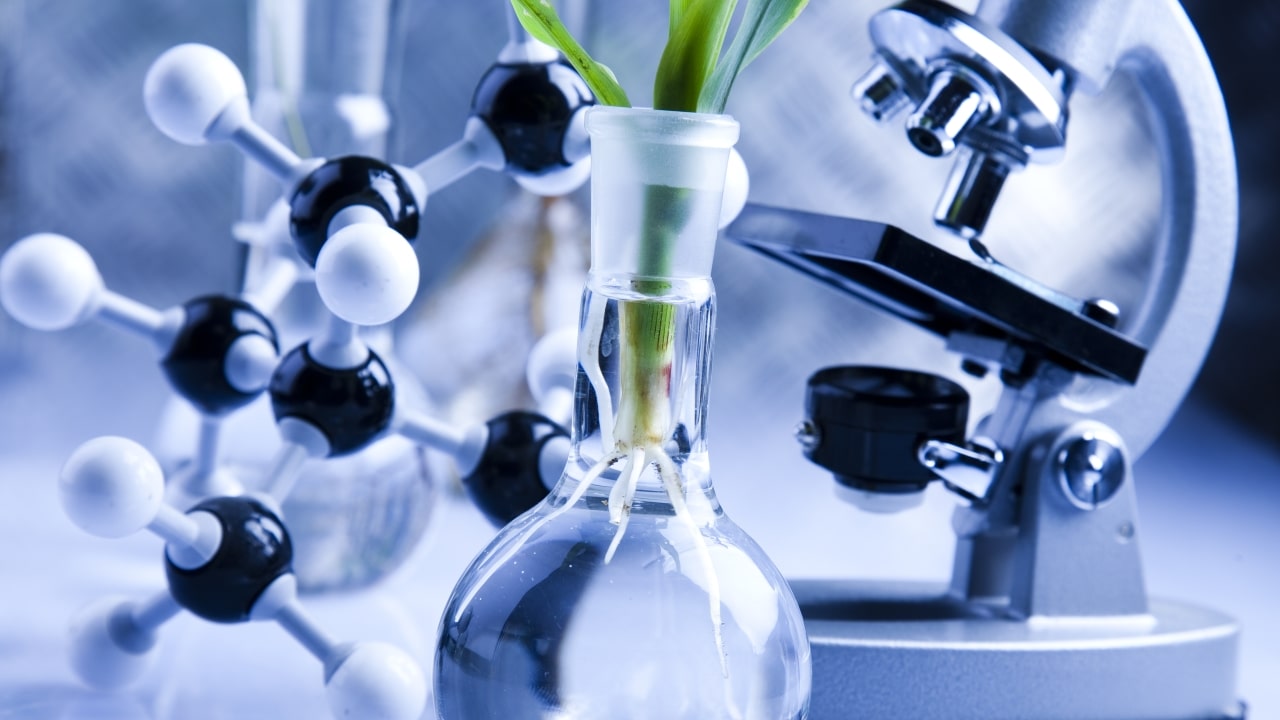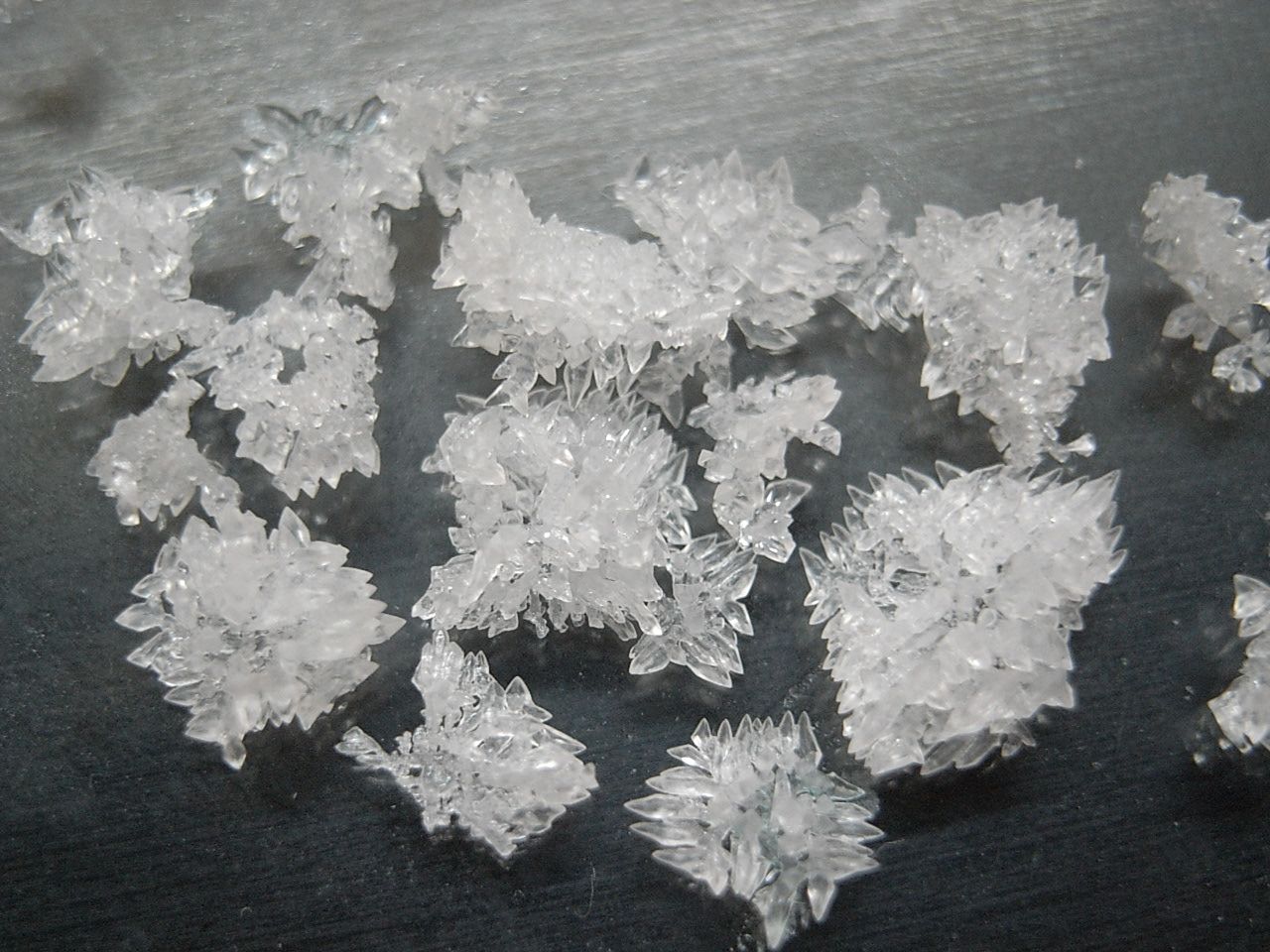Iodine, [7553-56-2], with an atomic mass of 126.9044, atomic number 53, is a non-metallic element of the halogen family, which is in group VII A of the periodic table between bromine and statin.
The electron configuration of iodine atom is Kr] 4d10 5s2 5p5]. The stable relative atomic mass of iodine is only isotope 127. So far, 22 artificial isotopes have been prepared for iodine, which have a mass between 117 and 139, and 14 of them have significant radiation efficiency, I122 to I123 and I126 to I136.
The shortest half-life is related to the isotope I136 with a half-life of 86 s and the longest half-life is related to the isotope I129 with a half-life of 1.6x107a. Isotope I129 is the product of fission of U235 with slow neutrons. Due to their use in radioactive tracing and radiotherapy, the most important radioisotopes are I131 with a half-life of 8d and I125 with a half-life of 60d.

The history of the discovery of iodine:
Iodine was first discovered in 1811 by Bernard Courtois (1838-1777) in France. Like many other compounds, iodine was discovered by chance. At that time, Napoleon’s army needed a lot of potassium nitrate (Saltpeter) to prepare gunpowder. Potassium nitrate was one of the main ingredients of gunpowder, and for its production, a huge source of sodium carbonate was needed. Sodium carbonate was prepared from wood ash, but the war dragged on for a long time and the wood of the willow tree, which was used to prepare sodium carbonate, ran out. In the meantime, it was suggested to use seaweed ash for this, which had large sources on the beaches of Normandy and Britain. This proposal was accepted.
In this new process, a large amount of troublesome sulfur compounds were created, which contaminated the work utensils. Sulfuric acid was used to clean them. One day Curtius accidentally used too much acid to clean her vat of potassium nitrate.
Suddenly, a purple vapor rose into the air, which turned into a shiny crystalline form after coming into contact with a cold tube.
She conducted some simple experiments on it and realized that this substance combines well with phosphorus, hydrogen and some metals, but it does not combine easily with oxygen and carbon. In addition, she discovered that when this substance is combined with ammonia, a completely explosive substance is created and does not decompose due to heat.
Curtius did not know if this substance was a new element or not, and as the war intensified, she no longer had enough time to research this substance. For this purpose, she sent some of this unknown substance to other scientists such as Charles-Bernard Désormes (1862-1777), Nicolas Clément 1841-1779, Gay-Lussac (1850-1778) and André Ampère.
At first, Gilosak and Amper introduced this substance as an oxygenated compound. But they still weren’t sure until Humphrey Davy and Joseph Gillosack conducted experiments on this substance. On December 10, 1813, he published an article in which he stated that it is a new substance and is very similar to chlorine and fluorine in terms of its properties and characteristics, and he named it Iodine, which is derived from the Greek word ioeides It means color Purple and in the dispute over the discovery of iodine, Gilosak and Davy, Bernard Curtius was declared the discoverer of this new element.
The first mineral compound containing iodine () was discovered in 1825 in Mexico, and the discovery of iodate happened in 1840 in Chile.
The creation of blue color in the reaction of iodine with starch was discovered in 1814 by G. J. Colin. He showed that with the help of this phenomenon, iodine can be determined in a ratio of one to 400,000. In the middle of the 1800s, the French Jean Boussingault proposed for the first time to use iodinated compounds to treat goiter. German chemist Eugen Baumann (1896-1846) discovered that the thyroid gland is rich in iodine.
Physical properties:
Iodine is the first member of the halogen family, which is solid at normal temperature. Iodine vapor exhibits fluorescence at low pressure, and when it is illuminated by sunlight or electric arc light, it emits a yellowish-green light. Also, when placed in a magnetic field between a nickel cross prism and a thermoluminescent above 500 degrees Celsius, it rotates the polarized light. X-ray absorption of iodine was measured and it was found that it crystallizes in orthorhombic structure.

Crystal structure:base-centered orthorhombic
Unit-cell dimensions / pm:a=726.47, b=478.57, c=979.08
Some of the physical properties of iodine are:

The following table shows the solubility of iodine in water and organic solvents along with their color:

Solubility of iodine in water at different temperatures:
| Temperature, 0C | Solubility, g/kg | Temperature, 0C | Solubility, g/kg |
| 0 | 0.162 | 60 | 1.06 |
| 20
25 |
0.293
0.340 |
70
80 |
1.51
2.17 |
| 30 | 0.399 | 90 | 3.12 |
| 40 | 0.549 | 100 | 4.48 |
| 50 | 0.769 | 110 | 6.65 |
chemical properties:
The usual oxidation states of iodine are equal to: 1- 1+ 3+ 5+ 7+
But the 4+ oxidation state has also been seen in a similar compound. Also, iodine ranks last among halogens in terms of electronegativity, and its reaction intensity is lower compared to fluorine, chlorine, and bromine. It also shows mild oxidation properties against acids.
The oxidizing power of iodine is greater than that of statin, the fifth element from the group of halogens. The characteristic reaction of halogens is in their direct reaction with metal, and the intensity of this reaction in iodine is less compared to other halogens, which leads to the formation of a non-volatile solid.
Iodine in solid state or vapor reacts with copper, silver, magnesium, calcium, aluminum, zinc, tin, nickel and iron and creates the corresponding iodides. But it does not react with lead, bismuth or gold. It does not react with platinum at normal temperature, but it reacts easily at 14000C. Iodine reacts with tungsten at normal temperature but not at high temperature. It also reacts with tantalum and niobium at a temperature of 1300-15000C and gives the corresponding pentadides. The reaction of iodine with vanadium leads to production, which is decomposed by heat.
Wet vapor of iodine has a corrosive effect on metals and types of stainless steel. The beginning of this corrosion is the creation of a metal iodide center and then the corrosion continues electrochemically. Only molybdenum and titanium steels are safe from the effect of iodine.
Iodine does not react with noble gases, sulfur and selenium. On the other hand, it directly reacts with some elements such as: Carbon, nitrogen, oxygen and some inert metals. Unlike chlorine, iodine does not react with carbon monoxide, nitric oxide or sulfur dioxide.
The reaction of iodine with carbon monoxide is possible only under acidic conditions and the catalyst of palladium salts. The reaction of phosphorus and iodine vapor leads to creation. Iodine dissolves in concentrated sulfuric acid without reacting, but in concentrated nitric acid it turns into iodine pentoxide.
The hydrolysis reaction of iodine is as follows:
The equilibrium constant for the above reaction at 250C is equal to 5.4×10-13. The concentration of compounds of the second side of the reaction depends on As it increases, the values of the second side of the reaction increase, for example, we have approximately 99%, but approximately 12% iodine and 88%. The dissociation constant is equal to 2.3 x 10-11 and has little effect on ion formation.
In acidic solution, iodine is a weak oxidizer. The reduction potential at 250C is -0.534 V. Iodine easily oxidizes thiosulfate to tetrathionate:
Similarly, it transforms and ions in acidic solution to and.
In dilute aqueous solutions, iodine oxidizes sulfur dioxide to sulfuric acid.
“Determination of iodine purity according to the USP method”
Purity of iodine according to USP standard should not be less than 99.80% and more than 100.5%.
Non-volatile residue:
Weigh 5 grams of iodine in a china dish and record its exact weight. Then put it under the hood in a water bath until all the iodine evaporates. After finishing this step, place the dish inside it for one hour under the temperature of 105 degrees Celsius.
Then put it inside the desiccator. After it reaches room temperature, weigh it. The remainder should not be more than 0.05% of the initial weight.
Chloride :
Weigh 250 mg of completely powdered iodine and add 10 ml of distilled water to it. Filter it and add dilute sulfuric acid drop by drop (about 1%) to the solution under the filter until the solution becomes colorless.
Add 5 ml of 6 normal ammonia to the solution and then add 5 ml of 0.1 normal silver nitrate drop by drop and slowly. Filter the result and acidify the filtered solution with nitric acid. The turbidity of the resulting solution should not be the same as the turbidity of the solution prepared under the same conditions and reagents from 0.1 ml of 0.02 normal hydrochloric acid, of course, sulfurous acid (H2SO3) has been removed from it.
Determining the purity percentage of iodine:
In a small beaker, dissolve 1 gram of potassium iodide in 5 milliliters of water, then weigh about 500 milligrams of completely powdered iodine in a closed Erlenmeyer flask and record its exact weight.
Add the potassium iodide solution to the iodine and close the balloon lid. Shake a little until the yeast is completely dissolved. After complete dissolution, add 50 ml of distilled water and 1 ml of 3 normal hydrochloric acid. Titrate the result with a standardized solution of sodium thiosulfate 0.1 normal. Near the end point, when the color of the iodine solution turns straw yellow, add 3 ml of starch glue indicator. The color of the solution will be dark blue. Continue until the titer solution becomes colorless.
Computing:
Each milliliter of 0.1 normal sodium thiosulfate solution is equivalent to 12.69 iodine.
Toxicology and occupational health
Iodine is absorbed by the body and accumulates in the form of diiodotyrosine and triiodothyronine. Iodine is an essential substance for humans and other large organisms. A person normally needs 75 milligrams of iodine per year. which can be provided by iodized salts.
Compared to other halogens, iodine has a higher safety at normal temperature. Because iodine is solid and its vapor pressure is only 1 kPa
(7.5 mmHg) at a temperature of 25 degrees Celsius, while this value for bromine and chlorine is 28.7 kPa and 700 kPa, respectively.
The American Occupational Health and Safety Association (OSHA) has determined the maximum concentration of iodine vapor allowed in the workplace air to be 0.1 ppm. If you want to touch iodine with your hands, it is recommended to use gloves, plastic aprons, protective glasses, and a mask. . The maximum possible amount of iodine to be exposed to in one hour is 0.1 ppm. Exposure of the lungs and eyes to 0.1 ppm of iodine can cause irritation of these organs.
Exposure to more than 0.1 ppm during long periods can cause severe irritation of the eyes and respiratory parts and pulmonary edema. The fatal dose for an adult is between 2 and 4 grams. Prolonging the contact of iodine with the skin can be very harmful and cause burns. The detection threshold of iodine smell for humans is equal to 0.9 ppm.
Chronic effects of iodine exposure: Insomnia, conjunctivitis, inflammation of the nasal mucosa, bronchitis, tremors, increased heart rate, diarrhea and weight loss.
Empty iodine containers should be burned in ovens or neutralized with a dilute solution of thiosulfate or thiosulfite.
If the eyes get irritated due to contact with iodine, they should be washed with water. 5% thiosulfate solution can be used for skin contamination. If iodine is swallowed, it will make the person vomit and the stomach should be washed immediately with 5% thiosulfate, then the injured person should be taken to the hospital. If the casualty is unconscious, do not give him anything.
If a person suffers from severe lung problems due to iodine contamination, the injured person should be moved to the open air. If it is not possible for the victim to breathe easily, use an oxygen capsule and if breathing stops, give artificial respiration.
Iodine can be mixed with ammonia solution in the presence of an organic active ingredient. Although the contact of ammonia gas and its solution with free iodine and its halogen derivatives in any form can lead to the formation of an explosive substance, nitrogen triiodide (NI3). If its dark brown color turns into a black solid, it should be thrown away while it is wet, or a rejuvenating liquid such as ethanol or any substance that can be iodized (iodized) should be poured over it.
Iodides are toxic when their amount is high. Eating or absorbing them from the skin causes yadism. which shows itself with the appearance of pimples, runny nose or headache. In severe cases, it may cause weakness, anemia and depression.
Be careful when coming in contact with organic iodine compounds.
In 1979 and 1986, nuclear accidents led to the release of 131I radioactive iodine into the atmosphere. Eating potassium iodide immediately after contamination with this radioactive iodine can reduce the amount of radioactive radiation in the thyroid gland by more than 90%. 130 mg is recommended for adults. If 4 hours have passed since the contamination, potassium iodide can only reduce the contamination by 50%.








